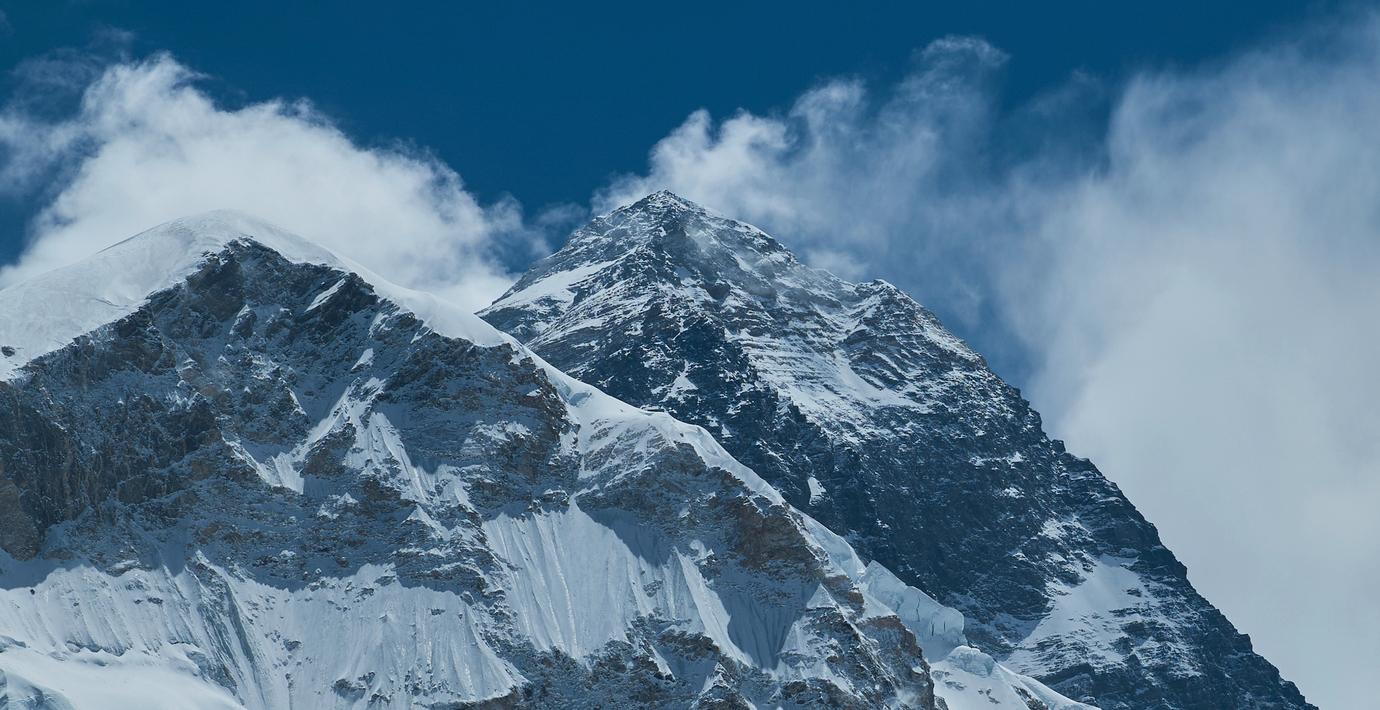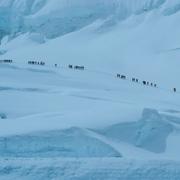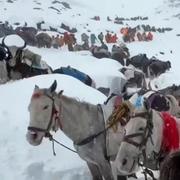
900 räddade från Mount Everest – alla i säkerhet
Samtliga 900 personer som varit strandade på Mount Everest efter ett kraftigt snöoväder i helgen har förts i säkerhet, rapporterar AP.
Det rör sig om hundratals bergsklättrare, lokala guider och jakherdar. De sista ska ha kunnat ta sig ned från berget på tisdagskvällen, svensk tid.
Enligt den statliga kinesiska nyhetsbyrån Xinhua har ett tiotal personer behandlats för nedkylning på tisdagen. En 46-årig koreansk man ska tidigare i veckan ha dött till följd av ovädret.
bakgrund
Mount Everest
Wikipedia (en)
Mount Everest (known locally as Sagarmāthā in Nepal and Qomolangma in Tibet) is Earth's highest mountain above sea level. It lies in the Mahalangur Himal sub-range of the Himalayas and marks part of the China–Nepal border at its summit. Its height was most recently measured in 2020 by Chinese and Nepali authorities as 8,848.86 m (29,031 ft 8+1⁄2 in).
Mount Everest attracts many climbers, including highly experienced mountaineers. There are two main climbing routes, one approaching the summit from the southeast in Nepal (known as the standard route) and the other from the north in Tibet. While not posing substantial technical climbing challenges on the standard route, Everest presents dangers such as altitude sickness, weather, and wind, as well as hazards from avalanches and the Khumbu Icefall. As of May 2024, 340 people have died on Everest. Over 200 bodies remain on the mountain and have not been removed due to the dangerous conditions.
Climbers typically ascend only part of Mount Everest's elevation, as the mountain's full elevation is measured from the geoid, which approximates sea level. The closest sea to Mount Everest's summit is the Bay of Bengal, almost 700 km (430 mi) away. To approximate a climb of the entire height of Mount Everest, one would need to start from this coastline, a feat accomplished by Tim Macartney-Snape's team in 1990. Climbers usually begin their ascent from base camps above 5,000 m (16,404 ft). The amount of elevation climbed from below these camps varies. On the Tibetan side, most climbers drive directly to the North Base Camp. On the Nepalese side, climbers generally fly into Kathmandu, then Lukla, and trek to the South Base Camp, making the climb from Lukla to the summit about 6,000 m (20,000 ft) in elevation gain.
The first recorded efforts to reach Everest's summit were made by British mountaineers. As Nepal did not allow foreigners to enter the country at the time, the British made several attempts on the North Ridge route from the Tibetan side. After the first reconnaissance expedition by the British in 1921 reached 7,000 m (22,966 ft) on the North Col, the 1922 expedition on its first summit attempt marked the first time a human had climbed above 8,000 m (26,247 ft) and it also pushed the North Ridge route up to 8,321 m (27,300 ft). On the 1924 expedition George Mallory and Andrew Irvine made a final summit attempt on 8 June but never returned, sparking debate as to whether they were the first to reach the top. Tenzing Norgay and Edmund Hillary made the first documented ascent of Everest in 1953, using the Southeast Ridge route. Norgay had reached 8,595 m (28,199 ft) the previous year as a member of the 1952 Swiss expedition. The Chinese mountaineering team of Wang Fuzhou, Gonpo, and Qu Yinhua made the first reported ascent of the peak from the North Ridge on 25 May 1960.
Omni är politiskt obundna och oberoende. Vi strävar efter att ge fler perspektiv på nyheterna. Har du frågor eller synpunkter kring vår rapportering? Kontakta redaktionen


